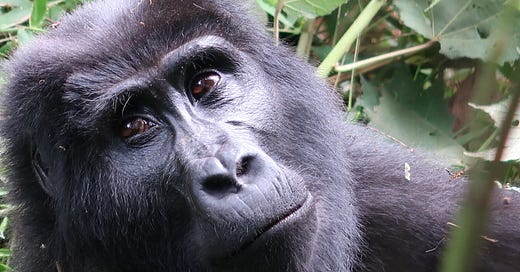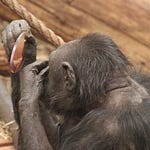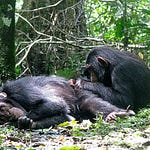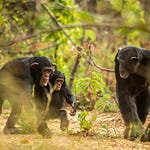The Ape Genome Project Redraws the Human Family Tree
For decades, geneticists have been peering into the DNA of apes in search of answers to human origins. But the truth was always a little hazy — because key parts of the ape genomes were missing.
Now, a vast international effort has changed that.
Scientists have published the most complete ape genomes ever assembled, resolving long-standing blind spots in the DNA of chimpanzees, bonobos, gorillas, orangutans, and siamangs. The work, published in Nature1, offers an unprecedented genetic window into the evolutionary forces that shaped both humans and our closest relatives.
"These ape genomes will enable us to reconstruct the evolutionary history of every base pair in our genome," said Evan Eichler, a genome scientist at the University of Washington and senior author of the study.
Nature’s Most Mysterious Repeats
Much of what was previously missing from ape genomes wasn’t random. It was precisely the most complicated regions — areas thick with repeating sequences and structural duplications. Until now, sequencing technologies tended to skip right over them.
But these repetitive regions, far from being genomic junk, turn out to be hotspots of evolutionary creativity.
"We are discovering hundreds of protein-coding genes embedded in these segmental duplications that are unique to each ape species," said Eichler. "Some of these have already been shown to contribute to changes that make us uniquely human, such as a bigger brain."
The Genome's Rough Neighborhoods
Segmental duplications — stretches of DNA that are copied, rearranged, and sometimes mutated — are often behind gene innovation. They’re also notorious for promoting chromosomal disorders in humans, such as developmental delay or autism, when they go wrong.
But in evolutionary terms, they’re rocket fuel.
Orangutans, for example, were found to have the largest number of recent duplications among the great apes — accounting for megabase-sized stretches of DNA. Bonobos, on the other hand, carry strikingly small but perfectly functional centromeres, raising tantalizing questions about how nature streamlines such vital structures.
A Family of Difference
The new genomes tell a story not just of relatedness — but of divergence. For example, humans and chimpanzees may share about 99% of their DNA in broad strokes, but it’s in these messy, repetitive regions where their differences bloom.
And some of those differences might matter more than expected.
"Most evolutionary biologists have long believed that what makes humans different from chimps lies mostly in gene regulation," Eichler explained. "But these new data challenge that. Structural rearrangements and new genes might have played a much bigger role than we thought."
The Road Ahead
While these six ape genomes are the most complete to date, the work is far from finished. The research team plans to sequence additional ape species and subspecies — work that may further refine the timeline of human evolution.
And the implications go beyond anthropology.
Understanding how genomes rearrange themselves naturally could inspire future biotechnologies — including the design of artificial chromosomes for gene therapy.
As Eichler put it: "Nature has been experimenting with these mechanisms for millions of years. We’re just beginning to learn the rules."
Suggested Related Research
Nurk, S., et al. (2022). The complete sequence of a human genome. Science, 376(6588), 44-53. https://doi.org/10.1126/science.abj6987
Shao, Y., et al. (2023). Phylogenomic analyses provide insights into primate evolution. Science, 380(6649), 913-924. https://doi.org/10.1126/science.abq8603
Rhie, A., et al. (2023). The complete sequence of a human Y chromosome. Nature, 621, 344-354. https://doi.org/10.1038/s41586-023-06457-y
Yoo, D., Rhie, A., Hebbar, P., Antonacci, F., Logsdon, G. A., Solar, S. J., Antipov, D., Pickett, B. D., Safonova, Y., Montinaro, F., Luo, Y., Malukiewicz, J., Storer, J. M., Lin, J., Sequeira, A. N., Mangan, R. J., Hickey, G., Monfort Anez, G., Balachandran, P., … Eichler, E. E. (2025). Complete sequencing of ape genomes. Nature, 1–18. https://doi.org/10.1038/s41586-025-08816-3











Share this post